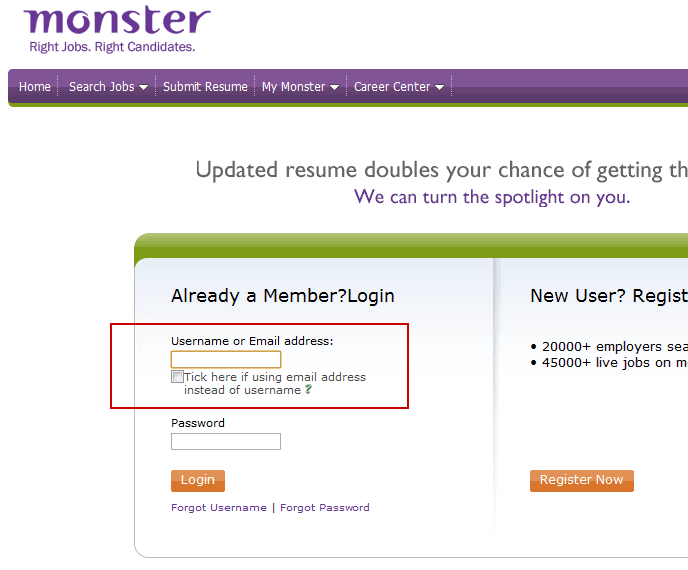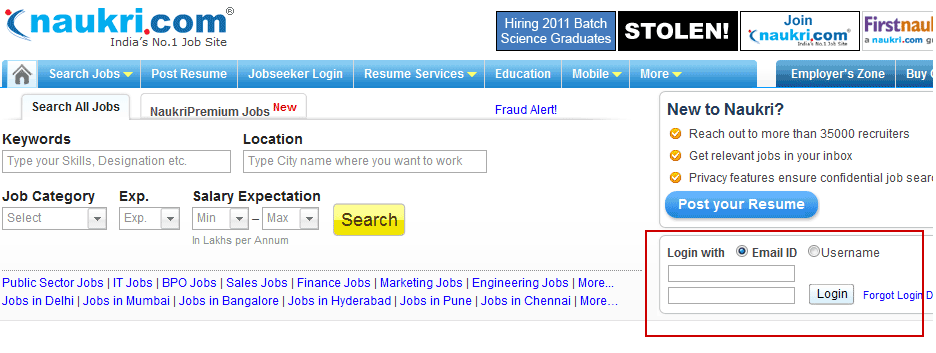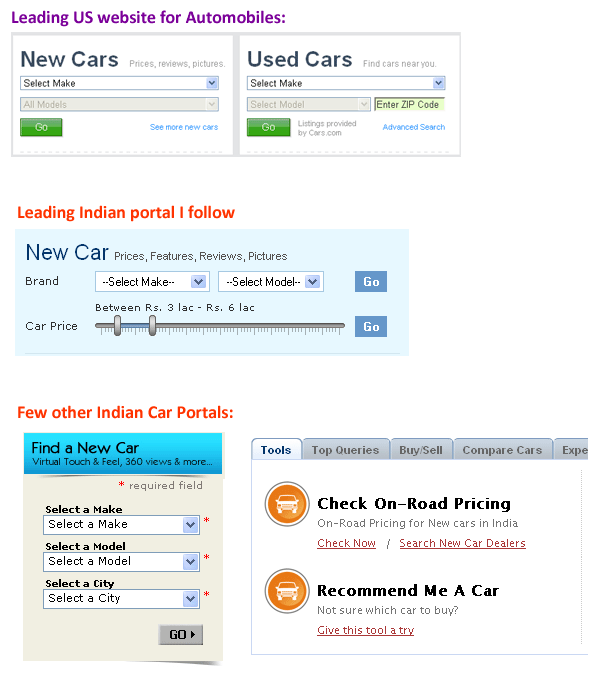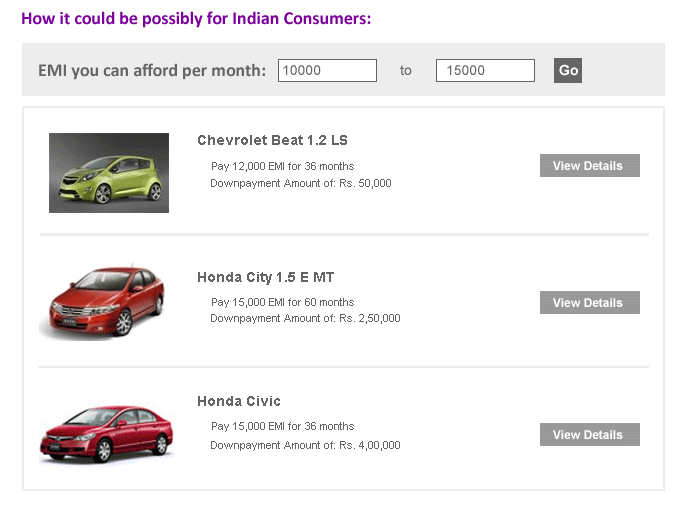There would be multiple Consolidations, Mergers, Change of Strategies by lot of VC-invested companies by 2015.
..
Product based eCommerce companies:
Lot of interest seen in recent times by VCs. LetsBuy, Snapdeal, FashionAndYou, Flipkart, and so on, Infibeam as well (though still not part of any portfolio yet). Future of eCommerce companies will depend completely on two factors:
– Internet penetration in India > 200 Mn by that time
– Improvement in eCommerce transactions (Infrastructure + User Comfort)
The rate at which investments are made are much higher than rate of growth of both the factors mentioned above – which in a way may be good – as all invested companies will act as catalyst in growth and get new set consumers on-board.
If we see an IPO exit for atleast one of product based eCommerce companies that will be awesome; One or Two VCs in India (without naming any here) have been actively investing in eCommerce space. There may be a very high possibility that they may merge two or more portfolio companies to form an large entity, which may be just a good acquisition target for Amazon or an IPO exit.
..
Group Buying companies:
Was surprised (like many others?) with GroupOn‘s decision of acquiring SoSasta. There are established players in Group Buying space, I’m sure GroupOn has seen some merit and synergies. For existing leading players like SnapDeal, Deals and You and Taggle – they will continue to grow and have to.
Possible exit for them will be Google (since they are starting with Google Offers) or an acquisition by eBay; or maybe GroupOn India may now want to expand presence with one more acquisition. Not to forget that LivingSocial will also come knocking. Now that eBay has ventured into Group Buying space – it has much higher accountability as deals are now served by eBay and not marketplace. eBay India may acquire someone if they decide to have an experienced them to execute this business vertical.
Expect one very large player to enter Group Buying space in next 1-2 months, if well executed – in all probability it may give tough challenge to current market leaders.
Unfortunately many small players will hit the dead pool (few of them have already) due to execution challenges, expansion costs, and lack of operating revenues to keep going as the model is very easy to replicate, but not easy to scale with thin-margins and high acquisition cost.
..
Online Travel Companies:
Clear IPOs for Yatra & Cleartrip. Will be great exit for all invested players. GoIbibo and ezeego1 are also leading players in travel domain – Goibibo’s exit may depend on ibibo’s overall plans, ezeego1 may raise capital through markets directly bypassing VC route.
Redbus is promising, they are very high on number of transactions – ticket size may be lower compared to Airline tickets, but % margins will be definitely higher. In all probabilities – Redbus may too hit an IPO or will be an acquisition target for Yatra or Cleartrip (listed travel companies by then as MakeMyTrip has acquired Ticketvala)
I hope someone in Indian Government thinks of the opportunity of listing IRCTC on stock markets.
..
Ticketing eCommerce:
BookMyShow will expand to more geographies – they have presence in Malaysia & New Zealand. To get to more such markets, they will require more capital – further investment and definite IPO candidate. Reliance ADAG is trying to make it big in entertainment through BIG – they might knock doors.
.
Technology Companies:
Pubmatic (industry’s first yield optimization player) may get acquired in few years. It faces good competition from AdMeld & Rubicon Project, however none of these yield companies are focusing on small publishers (the long tail) which may be the key to larger success.
iYogi by all speculation is IPO bound. Slideshare is leading in its segment and may be a great exit story. Fusion Charts is another one that may be acquired for technology and customers; and so is Martjack.
..
Advertising Networks:
Existing players – Tyroo, Komli, Ozone Media, AdMagnet and others. Do not forecast a immediate exit for these players – the number of players in this segment has been same for long time (no new entrants) – and otherwise too existing players seem to looking outside of India, are they hinting saturation of market? The frequency of acquisitions of pure advt-networks has decreased outside India (no big news in so many months?).
There is no distinct advantage over each other and offerings (if Vizisense is treated as product outside of Advt-Network). Would have been great to see an situation like AdMax Network (owns up majority market share in countries they operate – very tough competition to Google as they have leveraged on local language audience which is majority).
Google has played a flattener by opening up its unlimited inventory on Doubleclick exchange through Google Certified AdNetworks program. Post which the publisher development story may have taken some hit, but wondering why have not the Indian Advt Networks integrated on Google’s Doubleclick exchange yet – expand you publisher network!
InMobi which is now the largest mobile advt network (outside of Google/AdMob) – maybe one of the biggest exits through Nasdaq IPO. There is no immediate need for Google to buy another mobile advt network – that leaves IPO as only logical exit unless AOL, Yahoo or Microsoft realize that they haven’t looked at the mobile monetization business seriously.
..
Matrimony Portals:
BharatMatrimony (Consim Group) would be going for IPO in coming times. Not aware of any investors in Shaadi.com (although there are in Mauj & Fropper), if business is profitable and there are no investor pressures – unlikely to see an IPO from them (at least before BharatMatrimony).
Read somewhere that Jeevansathi has abandoned markets in South India (not sure of this), however its already a part of listed InfoEdge group, spin-off very unlikely as numbers are reported as part of InfoEdge.
..
No Clear Exits:
SMS GupShup, Guruji, mCommerce companies (PayMate, mChek and others) are few companies I am not convinced of having an clear exit strategy. (Someone do throw light on this)
..
Promising Startups:
The next wave of promising startups in India will be product-driven companies. Although the eco-system to fast acceptance of technology products is not so strong right now – it will be in coming years. Emergence of interesting start-ups like Practo, Zaakpay, Grexit, emo2, Workasaur are first steps in that direction.
..
Hoping to see many success in next 5 years! Best Wishes
—
This opinion was posted originally as an answer on Quora at: http://www.quora.com/Which-Indian-internet-company-will-have-the-biggest-exit-by-2015




